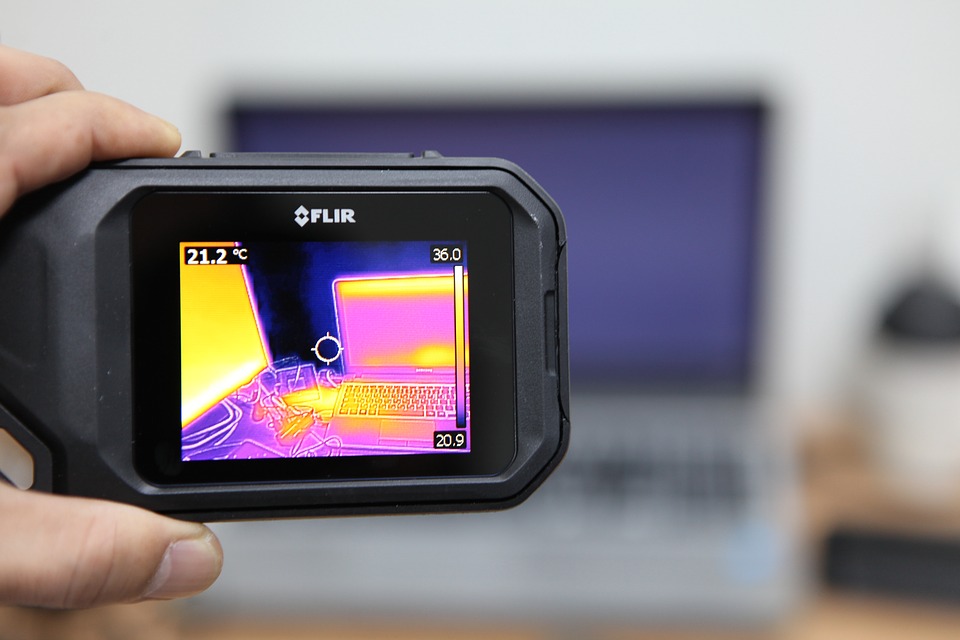Home inspections are an essential part of the buying or selling process, giving homeowners a clear picture of a property’s condition. While traditional inspections rely on visible signs of damage, thermal imaging takes the process to a whole new level, uncovering hidden issues that might otherwise go undetected. By using infrared technology, inspectors can identify problems related to moisture, insulation, electrical systems, and even pest activity—before they turn into costly repairs.
How Does Thermal Imaging Work?
Thermal imaging cameras detect temperature variations on surfaces, translating them into color-coded images. Warmer areas appear in shades of red, orange, and yellow, while cooler areas show up in blue and purple. These temperature differences help inspectors identify potential problem areas without invasive techniques like cutting into walls or ceilings.
What Can Thermal Imaging Reveal?
✅ Moisture Intrusion & Leaks
Water damage is one of the most destructive issues in a home, and it often starts behind walls, ceilings, or floors before becoming visible. Thermal imaging helps detect moisture buildup from:
- Plumbing leaks
- Roof leaks
- Foundation seepage
- Improperly sealed windows and doors
If left unchecked, moisture can lead to mold growth and structural damage, making early detection crucial.
✅ Missing or Inadequate Insulation
Poor insulation can result in high energy bills and uncomfortable indoor temperatures. Infrared scanning can reveal:
- Gaps in attic insulation
- Areas where insulation has settled or deteriorated
- Cold spots around windows and doors where air is escaping
Addressing these issues can improve energy efficiency and home comfort.
✅ Electrical Hot Spots
Overheated electrical components pose a serious fire hazard. During a thermal scan, an inspector can identify:
- Overloaded circuits
- Faulty wiring
- Loose connections in breaker panels
- Malfunctioning outlets and switches
These issues may not always be visible, but a thermal camera can detect dangerous heat buildup before it leads to an electrical failure or fire.
✅ HVAC System Deficiencies
A home’s heating and cooling system needs to operate efficiently to maintain comfort and reduce energy costs. Thermal imaging can help pinpoint:
- Leaky ductwork
- Blocked vents
- Failing HVAC components
- Inconsistent temperatures throughout the home
Finding and fixing these inefficiencies can save homeowners money and extend the life of their HVAC system.
✅ Pest Infestations
Rodents, termites, and other pests often create hidden damage behind walls or in attics. Since infestations generate heat, thermal imaging can help detect:
- Nesting areas inside walls
- Termite activity in wooden structures
- Openings where pests may be entering
Early detection can prevent costly damage and the need for extensive pest control treatments.
Why Homebuyers & Sellers Benefit from Thermal Imaging
For homebuyers, a thermal imaging scan provides peace of mind, ensuring there are no hidden defects before closing a deal. Sellers, on the other hand, can use it to address potential issues ahead of time, preventing surprises during negotiations.
Final Thoughts
Thermal imaging is a game-changer in home inspections, offering a deeper look into a home’s condition beyond what the naked eye can see. While not all home inspectors use this technology, choosing one who does can help identify hidden problems early, saving homeowners from unexpected headaches down the road.
If you’re considering a home inspection, ask about thermal imaging—it’s a small investment that could uncover major issues before they become costly repairs!

